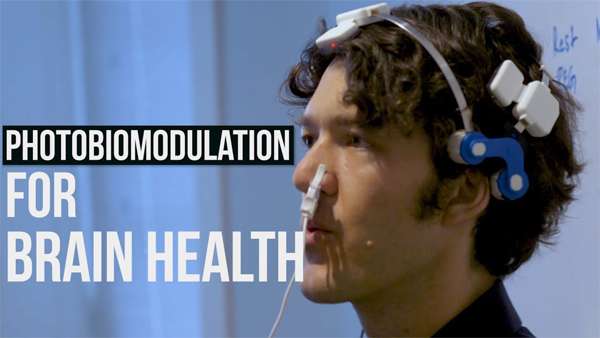In this article we’ll take a closer look at how singing can benefit your physical and mental health, and how to use signing as a form of therapy
In fact, there’s solid scientific evidence to prove that singing is, in fact, good for your body and your mind.
People love to sing. Whether or not they can carry a tune, people seem to understand that there’s something positive — something healthy — in the act of raising their voices in song.
Decades of research has shown that singing individually and in groups is good for you on many levels.
Here, according to science, are 10 key benefits of raising your voice in song.
1. Relieves stress
Singing appears to be a stress-reliever. A 2017 study measured the amount of cortisol, the stress hormone, in participant’s saliva before and after they sang.
Researchers in that study found that the amount of cortisol was lower after singing, an indication that people felt more relaxed after they’d belted out a tune.
They also found singing reduces stress levels whether the participants were singing in a group or by themselves.
There’s a small catch, though: Cortisol only goes down if you’re singing in a place that doesn’t make you anxious. A similar 2015 study tested salivary cortisol levels after a singing performance, finding that cortisol levels went up in this scenario.
2. Stimulates the immune response
There’s some evidence that singing may boost your immune system and help you fight off illnesses.
A 2004 study compared the effects of singing with the effects of simply listening to music. In two separate sessions, research subjects either sang or listened to music.
Those who sang showed higher levels of immunoglobulin A, an antibody your body secretes to help you fend off infections. Listening to music (without singing along) reduced stress hormones but didn’t stimulate the body’s immune system.
3. Increases pain threshold
When you sing in a group, whether it’s a large choir or a smaller group, the act of collective singing causes your body to release endorphins. This hormone can help promote positive feelings, and even change your perception of pain.
A 2012 study found that singing, drumming, and dancing in a group triggers the release of hormones that raise your pain tolerance in ways that just listening to music doesn’t.
Researchers note that the feelings of social connection, rather than the music itself, seems to be behind the boost in pain tolerance.
4. May improve snoring
Regular singing may change the way you breathe, even when you’re not singing. Researchers in a 2008 study interviewed the spouses of choir members, along with the spouses of people who don’t sing.
The researchers found that significantly fewer choir members snored. This led them to recommend regular singing as a potential treatment for snoring.
Studies have also shown that people who play wind instruments also snore less than the general population.
These findings have prompted some experts to suggest that singing and playing wind instruments might be helpful for people with obstructive sleep apnea (OSA).
5. Improves lung function
Because singing involves deep breathing and the controlled use of muscles in the respiratory system, it may be beneficial for certain lung and breathing conditions.
Studies have shown that the breathing techniques used with singing may offer benefits for people with the following conditions:
While singing doesn’t treat or cure any of these conditions, you may benefit from gaining strength in your respiratory muscles.
Singing also increases the amount of oxygen in your blood, research shows. In addition to the pulmonary benefits, singers also experience improved mood and a greater sense of social connection.
6. Develops a sense of belonging and connection
When you sing together with others, you’re likely to feel the same kind of camaraderie and bonding that players on sports teams experience.
In one 2014 study involving 11,258 schoolchildren, researchers found that children in a singing and musical engagement program developed a strong sense of community and social inclusion.
In a 2016 study involving 375 adult participants, researchers found that people who sang together in a group reported a higher sense of wellbeing and meaningful connection than people who sang solo.
One of the neurochemicals released when people feel bonded together is oxytocin, also known as the love hormone.
Spontaneous, improvised singing causes your body to release this feel-good hormone, which may help give you a heightened sense of connectedness and inclusion.
7. Enhances memory in people with dementia
People with Alzheimer’s disease and other types of dementia experience a gradual loss of memory. Studies have shown that people with these conditions were able to recall song lyrics more easily than other words.
In one singing study by the Alzheimer’s Foundation, participants said it was “nice to be able to remember something.”
However, the singers found they remembered more than just the lyrics. For some, singing familiar songs suddenly brought back life memories they’d forgotten, too.
Researchers found that singing songs learned at a younger age caused a spontaneous return of autobiographical details for many people.
8. Helps with grief
Singing in a group doesn’t just help you with physical pain; it may also help with the emotional pain you feel after you’ve lost someone you love.
In a 2019 study conducted among people dealing with grief, researchers found that for those who sang in a choir, depression symptoms didn’t get worse over time and their sense of wellbeing remained stable.
In fact, the choir singers felt a gradual improvement in their self-esteem during and after the 12-week study. Those in the control group who didn’t participate in the singing intervention didn’t report this benefit.
Researchers concluded that group singing may be a good option for people who need additional support during a time of grief.
9. Improves mental health and mood
A 2018 study done in the United Kingdom evaluated 20 people in a singing program known as The Sing Your Heart Out project. The participants included people with mental health conditions, as well as the general public.
Researchers found that the participants reported improvements in their mental health, mood, sense of well-being, and feeling of belonging as a result of these singing workshops.
10. Helps improve speaking abilities
Decades ago, scientists began researching the effects of singing among people who have a hard time with speech due to a neurological condition.
To date, researchers have found that singing improves the speaking ability for people with:
Singing stimulates multiple areas of the brain at the same time. This may enable people with an impairment in one part of the brain to communicate using other areas of their brain.
Singing can also prolong the sounds in each word, which may make it easier to pronounce them.
Singing also makes it easier to incorporate hand-tapping, a method that can help people maintain speaking rhythms that are otherwise challenging.
Can you sing safely in the era of COVID-19?
Because SARS-CoV-2, the coronavirus that causes COVID-19, is known to spread through respiratory particles, public health officials have cautioned against events where people sing collectively.
Researchers are currently advising organizers to keep rehearsals short, small, and ideally, remote. Larger, longer events are likely to be problematic for now.
Using masks, outdoor venues, and physical distancing may help, but are not a guarantee that the virus causing COVID-19 won’t spread when people meet to sing in person.
Research on this relatively new phenomenon is being continually updated.
Binaural beat therapy is an emerging form of sound wave therapy. It makes use of the fact that the right and left ear each receive a slightly different frequency tone, yet the brain perceives these as a single tone.
Advocates of this type of therapy currently recommend it for the treatment of anxiety, stress, and related disorders. This self-help treatment is usually available in the form of audio recordings that a person listens to on stereo headphones.
However, research is inconclusive about the clinical benefits of binaural beat therapy, and a doctor does not oversee its delivery. Therefore, it is best not to replace traditional treatments for stress and anxiety with this type of intervention.
Binaural beat therapy is not part of standard care for any condition. Doctors consider this treatment to be semi-experimental.
In this article, we explain binaural beats and look at current research to assess their effectiveness. We also clarify how to use them.
How do binaural beats work?

Share on Pinterest
Binaural beats therapy may help treat anxiety, stress, and related disorders.
According to a 2015 literature review, the tones should be at frequencies lower than 1,000 hertz (Hz) for the brain to detect the binaural beat. The binaural beat that a person perceives is the frequency difference between the waves entering the left and right ear.
For example, if the left ear registers a tone at 200 Hz and the right ear registers one at 210 Hz, the binaural beat is 10 Hz — the difference between the two frequencies.
The findings of a 2018 study suggest that listening to binaural beats for a recommended period can affect a person’s subsequent behavior and sleep cycles.
The study authors explain that there are five different categories of frequency pattern:
- Delta pattern: Binaural beats in the delta pattern operate at a frequency of 0.5–4 Hz with links to a dreamless sleep. In the study, people who received a delta pattern frequency during sleep entered a deeper stage of sleep, according to electroencephalogram (EEG) brain scan results.
- Theta pattern: Practitioners set binaural beats in the theta pattern to a frequency of 4–7 Hz. Theta patterns contribute to improved meditation, creativity, and sleep in the rapid eye movement (REM) phase.
- Alpha pattern: Binaural beats in the alpha pattern are at a frequency of 7–13 Hz and may encourage relaxation.
- Beta pattern: Binaural beats in the beta pattern are at a frequency of 13–30 Hz. This frequency range may help promote concentration and alertness. However, it can also increase anxiety at the higher end of the range.
- Gamma pattern: This frequency pattern accounts for a range of 30–50 Hz. The study authors suggest that these frequencies promote maintenance of arousal while a person is awake.
Benefits
The purpose of using binaural beats therapy may differ among individuals. Some people may need help decreasing their anxiety, while others might want to increase their concentration or deepen their level of meditation.
Proponents of binaural beat therapy suggest that the potential benefits include:
- reduced stress and anxiety
- increased focus, concentration, and motivation
- improved confidence
- better long term memory after exposure to beta pattern frequencies, according to a 2019 study
- deeper meditation
- enhanced psychomotor performance and mood
However, a 2017 study that measured the effects of binaural beat therapy using EEG monitoring found that binaural beat therapy does not affect brain activity or emotional stimulation. The researchers also monitored heart rate and skin conductance as indicators of emotional arousal.
How to use binaural beats
To listen to binaural beats, a person will need a pair of stereo headphones and an MP3 player or another music system.
As the leading authorities in psychiatric treatment have no recommendations for binaural beats, it is usually the producer of the tape that makes the suggestions for use.
People should follow the instructions carefully. Those who do not see any reduction in anxiety might benefit from trying a different producer, type of sound, or frequency.
It is important to avoid using binaural beats therapy while undertaking tasks that require alertness and full attention, such as driving.
Research
Share on Pinterest
A person may reduce anxiety before surgery by listening to binaural beats.
Early research from 2001 suggested that binaural beat therapy may yield some benefit for people with mild anxiety. However, the authors stated that it warranted further study only as a therapeutic measure to support conventional treatments for anxiety.
Despite this, other researchers have continued to investigate this therapy. A 2005 study involving more than 100 participants who were due to receive general anesthesia for a day procedure reported a decrease in preoperative anxiety after exposure to a delta wave binaural beat.
The participants in this study listened to 30 minutes of binaural beats before surgery. However, the researchers noted that people experiencing high levels of preoperative anxiety could listen to binaural beats for up to 1 hour before anesthesia to reduce levels of anxiety.
Researchers from the National College of Natural Medicine in Oregon conducted a study on binaural beat therapy in 2007. They evaluated eight study participants who listened to delta wave binaural beat therapy every day for 60 days.
The results showed a decrease in anxiety, insulin-like growth factor, and dopamine. The participants also reported an increase in quality of life. The team concluded that although the small sample size means that further research is necessary, binaural beats might improve self-reported anxiety.
A 2019 review of 22 studies found a significant link between more prolonged exposure to binaural beat tapes and reduced anxiety. It also found that practitioners did not need to mask the beats with white noise for the treatment to have an effect.
Some researchers have even suggested that 10 minutes of exposure to a 6 Hz frequency could induce a brain state similar to that during meditation.
Although there is little evidence of any adverse side effects of using binaural beat therapy, a literature review of studies identified conflicting data, so further research is necessary.
Takeaway
As with any self-help tool, it is important for a person to speak with a healthcare professional to determine whether binaural beats therapy is right for them.
The quality of the available research is mixed. Many of the studies confirming the benefits of binaural beats therapy involved small cohorts and used subjective measurements, such as questionnaires. There are few recent, high quality studies supporting binary beat therapy as an effective treatment for anxiety.
However, people can practice binary beat therapy at home with no training. Therefore, those who find that it reduces their anxiety can use it to support ongoing anxiety treatment.
It is important to note that there is a lack of research on the long term side effects of the therapy. People may wish to start with shorter sessions of binaural beat therapy and increase their exposure gradually.
Q:
What proven self-care measures are available for people with anxiety?
A:
Among nonpharmacologic treatments for anxiety, cognitive behavioral therapy (CBT) has the most scientific evidence to support its use. However, it is important to consider that CBT, in many people, is best as part of a multimodal treatment plan that includes medication.
Andrew Gonzalez, MD, JD, MPH Answers represent the opinions of our medical experts. All content is strictly informational and should not be considered medical advice.



